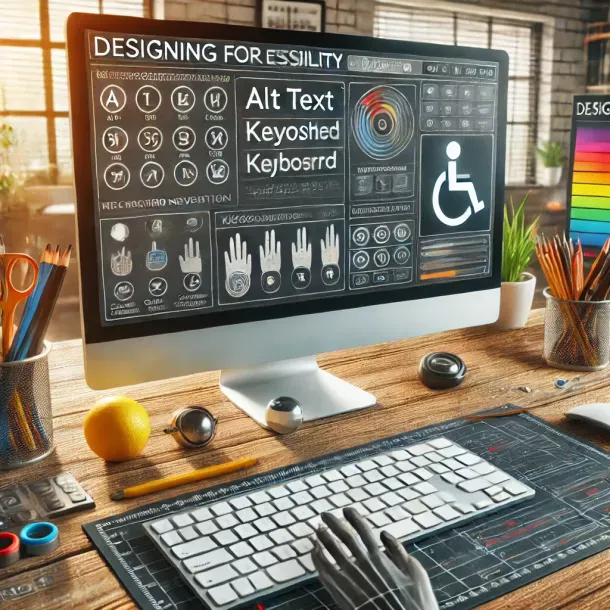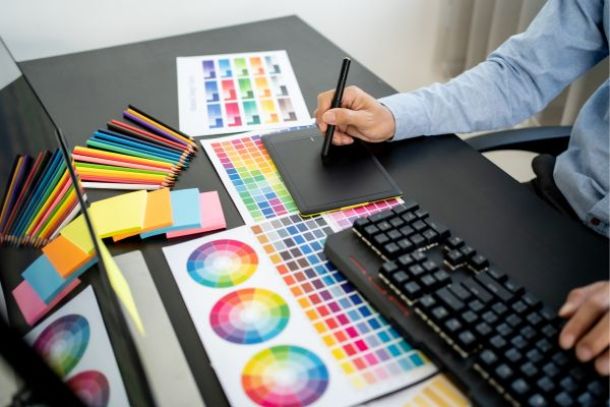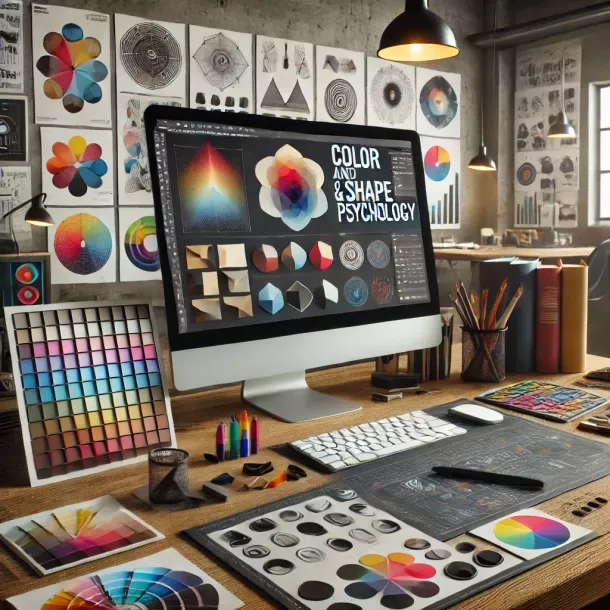Visual Composition Tips: Creating Attractive and Harmonious Designs
Visual Composition Tips: Creating Attractive and Harmonious Designs
Visual composition is a fundamental aspect of design that can greatly impact the effectiveness and appeal of a project. By applying key principles and techniques, designers can create visually compelling and harmonious compositions that capture the attention of viewers. In this article, we will explore essential tips for visual composition that will help you create projects that are both aesthetically pleasing and engaging.
Establish a Clear Focal Point
A strong composition begins with a clear focal point. Identify the main element or message that you want to communicate and ensure it stands out prominently. Use visual techniques such as size, color, and contrast to draw attention to the focal point and guide the viewer’s eye. By establishing a clear focal point, you create a visual hierarchy that guides the viewer’s understanding of your design.
Balance Elements with the Rule of Thirds
The rule of thirds is a widely used guideline for achieving visual balance in composition. Imagine dividing your design into a grid of nine equal parts, with two horizontal and two vertical lines. Place important elements along these lines or at their intersections. This creates a visually pleasing balance and allows for effective placement of focal points and secondary elements.
Embrace Negative Space
Negative space, also known as white space, is the area surrounding and between design elements. Embracing negative space is essential for achieving balance and allowing elements to breathe. Avoid overcrowding your composition and give elements sufficient space to stand out. Negative space not only creates a sense of clarity and elegance but also directs the viewer’s focus to the essential elements of your design.
Utilize Visual Hierarchy
Visual hierarchy is the arrangement of elements in a design that indicates their relative importance. By using techniques such as size, color, contrast, and typography, you can establish a clear visual hierarchy that guides the viewer’s attention. Important elements should be more prominent, while secondary elements should be visually subordinate. This ensures that viewers can quickly and intuitively understand the message or purpose of your design.
Employ the Rule of Odds
The rule of odds suggests that an odd number of elements in a composition is more visually appealing than an even number. Odd numbers create a sense of visual tension and interest, making the composition feel more dynamic and engaging. When arranging elements, consider grouping them in sets of three or five rather than pairs. This technique adds visual intrigue and helps create a harmonious composition.
Use Color Theory
Color plays a crucial role in visual composition. Understanding color theory can greatly enhance the impact and effectiveness of your design. Consider the emotions and messages associated with different colors and use them strategically to evoke specific responses from viewers. Additionally, pay attention to color harmony and contrast to create visually appealing and cohesive designs.
Create Depth with Layers and Overlapping
To add depth and dimension to your compositions, utilize layers and overlapping elements. This technique creates a sense of spatial relationships between different elements, making the design feel more immersive. Experiment with layering elements in the foreground and background, allowing them to interact and overlap. This creates visual interest and adds depth to your composition.
Align and Grid-Based Layouts
Maintaining alignment and utilizing grid-based layouts provides structure and consistency in your composition. Align elements along a common axis or use a grid system to create a sense of order and cohesion. This technique ensures that elements are visually connected and creates a sense of harmony and professionalism in your design.
Consider Typography
Typography is an essential element in visual composition, particularly in projects involving text. Choose fonts that complement the overall style and message of your design. Pay attention to font size, spacing, and hierarchy to ensure readability and visual balance. Experiment with typography as a design element itself, using creative layouts and arrangements to enhance the overall composition.
Seek Feedback and Iterate
Seeking feedback from others is invaluable in improving your compositions. Show your work to peers, colleagues, or mentors to gain different perspectives and insights. Listen to constructive criticism and use it to iterate on your design. Experiment with different arrangements, adjust elements, and refine your composition based on the feedback received. Iteration is key to achieving a visually appealing and harmonious composition.
Consider Scale and Proportion
Scale and proportion play a vital role in visual composition. By carefully considering the size relationships between different elements, you can create a sense of harmony and balance. Experiment with different scales to create visual interest and emphasize the importance of certain elements. Remember that proportionate elements tend to be visually pleasing, while extreme variations in scale can create visual tension and impact.
Use Repetition and Patterns
Repetition and patterns add visual rhythm and cohesiveness to a composition. Incorporate repeated elements, such as shapes, lines, or colors, to create a sense of unity and consistency. This technique helps guide the viewer’s eye through the design and establishes a visual language that ties the elements together. However, be mindful not to overuse repetition, as it may result in a monotonous or predictable composition.
Create Movement and Flow
Designs with a sense of movement and flow are more engaging and dynamic. Consider the direction and arrangement of elements to create visual pathways that guide the viewer’s eye smoothly through the composition. Utilize lines, curves, or other directional elements to create a sense of movement and energy. This technique adds visual interest and encourages viewers to explore the entire composition.
Experiment with Symmetry and Asymmetry
Symmetry and asymmetry are two contrasting approaches to visual composition. Symmetry creates a sense of balance and order by mirroring elements on either side of a central axis. It conveys a sense of stability and formality. On the other hand, asymmetry introduces visual tension and a more dynamic feel. It can be achieved by positioning elements off-center or using varying sizes, colors, or shapes. Experiment with both symmetrical and asymmetrical compositions to find the most appropriate approach for your design.
Pay Attention to Visual Weight
Visual weight refers to the perceived heaviness or prominence of an element in a composition. Elements with greater visual weight attract more attention from viewers. Consider the size, color, contrast, and density of elements to distribute visual weight effectively. Balance heavier elements with lighter ones to create a visually harmonious composition. Strategic placement of elements with different visual weights helps establish a pleasing equilibrium.
Create Contrast and Emphasis
Contrast is a powerful tool in visual composition that adds visual interest and helps emphasize important elements. Contrast can be achieved through variations in color, size, shape, texture, or value. By juxtaposing contrasting elements, you create a visual impact that directs the viewer’s attention to specific areas of your design. Use contrast deliberately to highlight key messages or focal points within your composition.
Harmonize Colors and Color Schemes
Color harmony is essential for creating visually appealing compositions. Understand color theory and how different colors interact with one another. Select color schemes that evoke the desired emotions or associations for your design. Harmonious color combinations, such as complementary, analogous, or monochromatic schemes, contribute to a balanced and visually pleasing composition. Experiment with color relationships to achieve the desired mood or atmosphere.
Test for Accessibility
Accessibility should be considered in visual composition to ensure inclusivity. Pay attention to color contrast, legibility of text, and clarity of visual elements. Ensure that important information is easily distinguishable for individuals with visual impairments or color vision deficiencies. Testing your design with accessibility tools and guidelines can help identify areas that require improvement to make your composition accessible to a wider audience.
Use Visual Cues and Gestalt Principles
Gestalt principles describe how humans perceive and interpret visual information. Utilize these principles to create intuitive and easily comprehensible compositions. Principles such as proximity, similarity, closure, and continuity can guide the arrangement and grouping of elements in your design. By leveraging these principles, you can create compositions that are visually cohesive and enable viewers to perceive the whole before focusing on the individual elements.
Experiment and Push Boundaries
Don’t be afraid to think outside the box and experiment with unconventional compositions. Push the boundaries of traditional design principles to create unique and visually captivating compositions. Play with unexpected juxtapositions, unconventional alignments, or unconventional use of elements. The goal is to create visually striking designs that evoke curiosity and captivate the viewer’s attention
.
Remember, visual composition is both an art and a science. It involves applying principles and techniques while allowing room for creativity and experimentation. By incorporating these tips into your design process, you can create projects that are not only aesthetically pleasing but also visually engaging and impactful.
Conclusion
By applying these essential tips for visual composition, you can create projects that are visually compelling, harmonious, and engaging. Remember to establish a clear focal point, balance elements using the rule of thirds, embrace negative space, and utilize visual hierarchy. Employ the rule of odds, use color theory effectively, and create depth with layers and overlapping elements. Maintain alignment and consider typography as a crucial design element. Seek feedback, iterate, and refine your compositions to achieve the best possible outcome. With these tips in mind, you’ll be well-equipped to create visually stunning designs that captivate and resonate with viewers.


